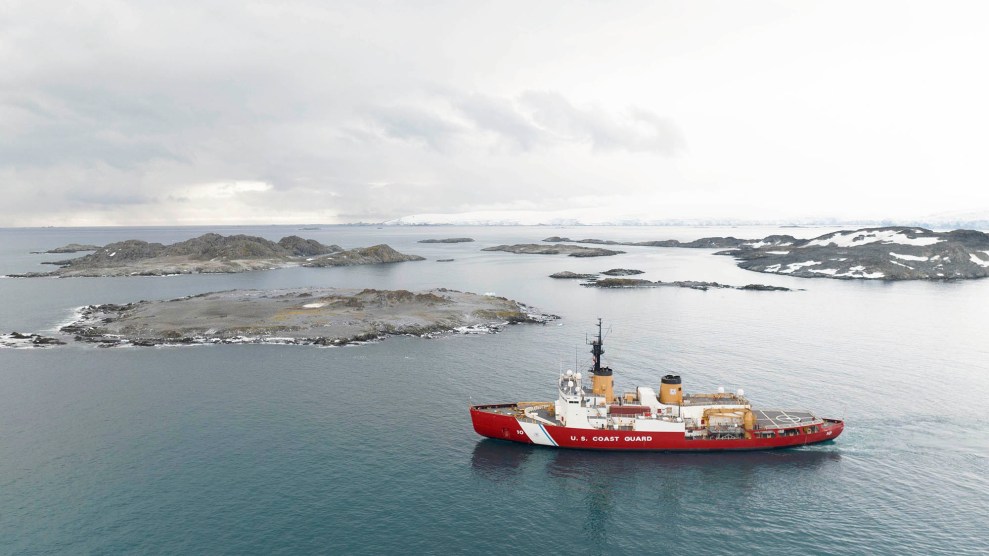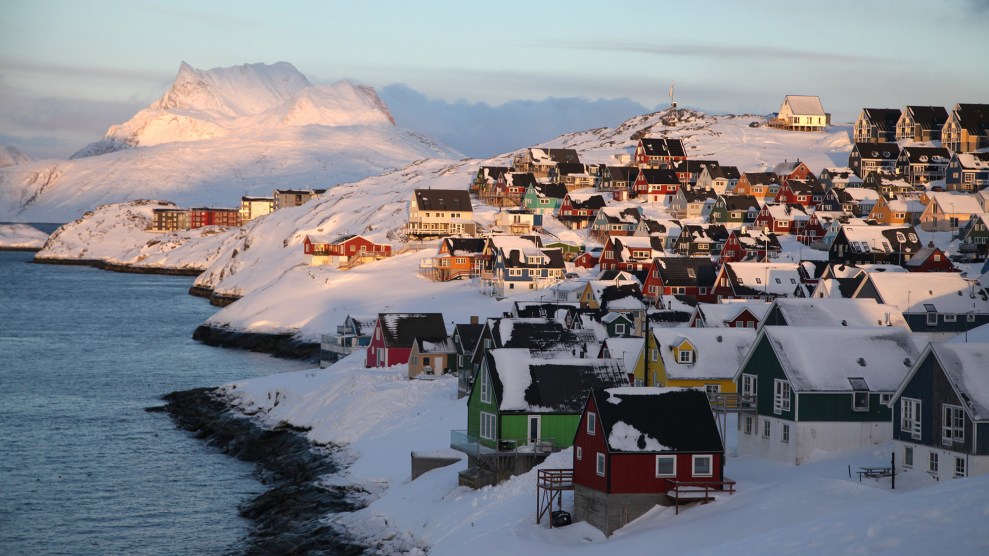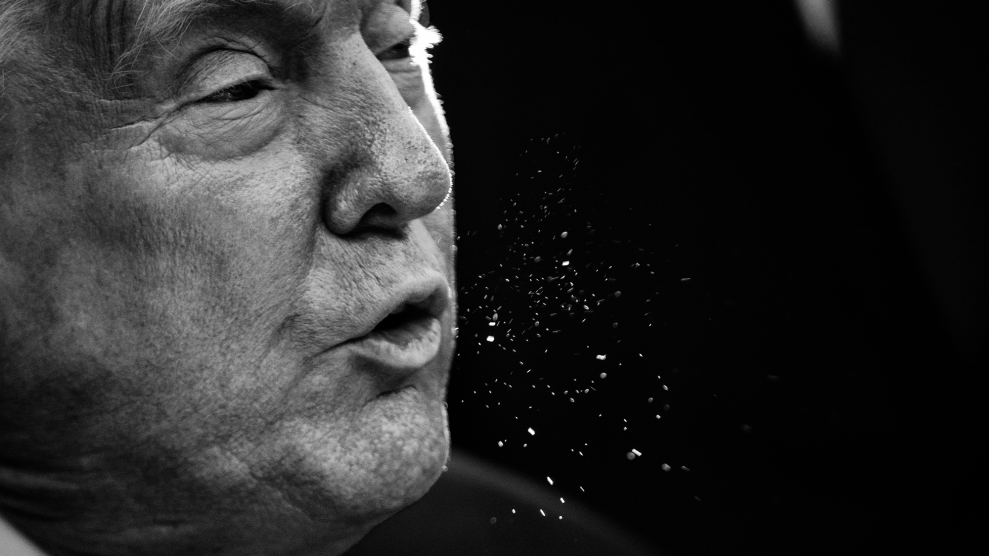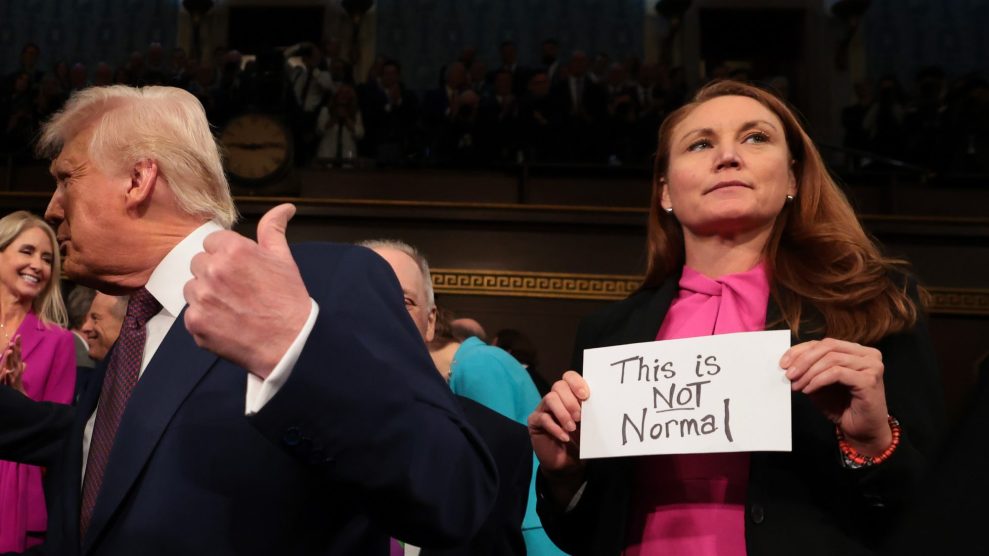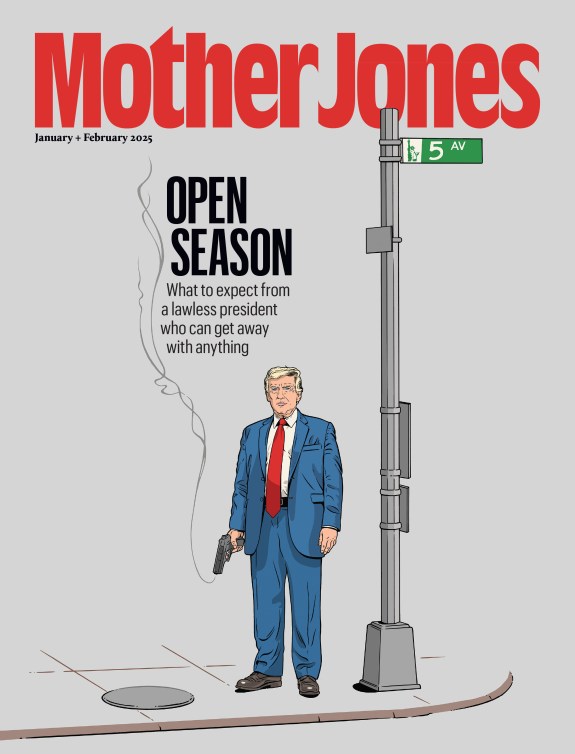
In late January, Jim Sims, the president and CEO of the Western Business Roundtable, an industry trade group that represents mining and energy interests, told his colleagues to prepare for the worst: The polar bear was almost certain to receive “threatened” status under the Endangered Species Act. “The negative implications of this to business and industry [are] breathtaking,” he wrote in an email, obtained by Mother Jones. But, he said, his and other groups had devised a plan to fight and “quite possibly reverse” the imminent ruling. Part of that strategy involved a legal challenge to the listing. On that score, Sims promised they had “secured a truly extraordinary plaintiff for this effort: one of America’s most prominent civil rights leaders of the four past decades.”
That prominent plaintiff was Roy Innis, the longtime chairman of the Congress of Racial Equality. A civil rights group that dates back to the 1940s, CORE’s agenda has taken a distinct rightward tilt under Innis’ leadership, aligning itself with conservative activists opposed to the environmental movement. Speaking in March at a conference of global warming skeptics sponsored by the Chicago-based Heartland Institute, which has received more than $600,000 in funding from ExxonMobil since the late ’90s, Innis announced that his organization, itself a recipient of Exxon funding, would sue the Bush administration if the polar bear were listed. He cast the issue as one of economic justice, if not civil rights, saying that the pending ruling would “result in higher energy prices across the board which will disproportionately be borne by minorities,” causing “countless families in our country in winters ahead to choose between food on the table and fuel in the furnace.”
Should the polar bear receive ESA protection in a decision expected by early next week, legal challenges, full-press lobbying, and media campaigns designed to portray the listing as a devastating financial blow to a country already in economic turmoil are just the tip of the proverbial iceberg. “You’re going to start seeing lawsuits like dandelions in a field the day after the regulations are filed,” Sims told me. Innis says, “I will join anyone who wants to fights this thing. There is nothing that’s impacting us more than $4 gasoline. It’s going to impact so heavily minorities and poor people. This should be the major talking point in the presidential campaign.”
Since 2005, when the Arizona-based Center for Biological Diversity petitioned the Fish and Wildlife Service to list the polar bear as a threatened species, a broad coalition of industry and conservative groups have watched, with increasing dread, as the petition slowly worked its way through the Interior Department, helped along by lawsuits filed by environmental groups. Almost since the ink dried on the ESA more than thirty years ago, conservatives have bridled at its strictures, viewing the law as an affront to free-market principles and an impediment to businesses seeking to develop land or extract natural resources. But, even in this context, the polar bear’s possible ESA listing has elevated the debate to a fever pitch. “Compared to this decision, the Spotted Owl and Snail Darter cases were pimples on an elephant,” Chuck Cushman, the founder of the American Land Rights Association, told recipients of his email list this winter in an “all out call to action” that implored supporters to “deluge the White House and Interior Department with calls, faxes and emails.” By this he meant that, unlike typical ESA listings, protections for the polar bear could extend well beyond its natural habitat in the US, along the Beaufort and Chukchi seas of northern and western Alaska. Based on scientific studies showing that global warming is rapidly deteriorating the Arctic sea ice that polar bears call home, the CBD’s endangered species petition was among the first to tie greenhouse gas emissions to the fate of a species.
It was no accident. If the petition succeeds, it could prompt a wholesale shift in federal climate-change policy, potentially forcing a wide array of industries nationwide, and the energy sector in particular, into compliance with the ESA. Under this scenario, says Kassie Siegel, the CBD attorney who coauthored the organization’s polar bear petition, “If you have an action that’s going to lead to a major amount of greenhouse gas emissions, you also need to consider the cumulative impact of those emissions on polar bears and look at ways to reduce those emissions.”
Cushman, who says he is not opposed to protecting the polar bear or even reducing greenhouse gases, told me he believes that bringing emissions under the purview of the ESA could result in turning small industrial enclaves into ghost towns. “We have to keep in mind that people are an important species too,” he says. “Instead of a radical regulatory regime, we have to have a moderate, gradual swing.”
But to environmental activists like Siegel, the time for swift action is now. “Behavior needs to change,” she says. “And litigation changes behavior. It’s a good thing if we have fewer coal-fired power plants and less offshore oil and gas development. To say that it’s going to shut down the economy, that’s just incorrect. It’s mumbo jumbo.”
The Bush administration has kept the polar bear petition in limbo for more than three years and, overall, has resisted taking steps to address global warming—even going so far as to suppress climate-change research and other studies by government scientists deemed out of step with the White House’s agenda. Among the officials discovered to be playing politics with science was Julie MacDonald, a former deputy assistant secretary at the Interior Department, and, for five years, the person in charge of overseeing the Fish and Wildlife Service’s ESA program. Last March, an investigation of MacDonald by the Interior Department’s inspector general reported that she had “been heavily involved with editing, commenting on, and reshaping the endangered species program’s scientific reports from the field,” despite her lack of a “formal educational background in natural sciences.” Though she resigned last May, amidst news that she had passed internal agency documents to industry lobbyists, the pace of the listing process did not pick up. In January, the Fish and Wildlife Service missed its deadline for issuing a decision, while the Interior Department’s Minerals Management Service almost simultaneously announced plans to auction off oil- and gas-exploration leases in the Chukchi Sea, the very heart of polar bear country. This move was seen as no accident by environmentalists, and was sharply criticized by Barbara Boxer, the chair of the Senate’s environment and public works committee.
At this point, however, the administration has put off the ruling as long as it can. Last week a federal judge ordered the Interior Department to weigh in on the polar bear petition once and for all by May 15, leaving conservative opponents to the ESA listing bracing for the worst—and strategizing their counterattack.
Sims, of the Western Business Roundtable, whose members include Shell, Marathon Oil, and the API (formerly the American Petroleum Institute), says it’s possible that the administration may take a middle road, conferring ESA protection but not linking the polar bear’s decline with global warming—effectively declawing the listing of its full regulatory impact. This outcome would be unlikely to please either side in this debate. “That doesn’t mean that the next administration, starting in January 2009, won’t redo the listing, and link the two,” Sims explains. “In my mind, it’s only a matter of time. One way or another we’re going to be in the soup.” While the groups opposed to the polar bear’s ESA listing have argued that it will result in a flood of environmental lawsuits, these same groups are readying for their own legal onslaught.
According to Sims’ January email, the lawsuit by Roy Innis, of the Congress of Racial Equality, will be central not only to the legal campaign conservative groups plan to wage against the polar bear listing, but to their media offensive as well. “Our plaintiff’s action will give us a very high visibility national media platform on day one,” he wrote in his message. Sims went on to say that plans were in the works for a 15-city bus tour to promote the litigation and that Fox News’ Sean Hannity “has committed to me that he will put our plaintiff and this issue front and center on his radio and television shows when we launch.” He continued, “We should be able to very quickly take over this issue from the radical enviro groups and place it squarely where it belongs: on the negative impacts this decision will have on the poor.”
A longtime energy lobbyist who once served as the communications director for the controversial energy task force headed by Vice President Dick Cheney, Sims told me that part of his organization’s campaign would entail educating the public on the “weakness of the science underscoring this petition.”
Yet scientists have been fairly clear about the plight of the polar bear and its root causes. Among other studies showing that the polar bear and its habitat are in peril, government researchers with the US Geological Survey reported in September that due to melting sea ice caused by climate change, two-thirds of world’s polar bear population could die off by 2050.
Nevertheless, during our conversation Sims told me that the “polar bear population is at one of its highest levels in nearly four decades”; that polar bears are actually “doing well”; and that the species has lived “quite nicely through periods, thank you very much, when there’s no polar ice.”
As it happens, it’s prime polar bear watching season, and many of the top experts in the field have decamped to the Arctic to study them. Among them is the University of Alberta’s Andrew Derocher, who’s currently in Tuktoyaktuk, on the Beaufort Sea in Canada’s Northwest Territories. “It’s looking to be one of the worst years I’ve seen up here in a long time,” he says. “It’s probably an extension of the low ice year we saw last year in the Beaufort Sea, actually throughout the Arctic. We haven’t done anywhere near what we’d normally do. We’re just not seeing many bears here. I know from talking on email with Alaskan colleagues they’re seeing something very similar this year as well.”
Derocher, a leading polar bear ecologist, first traveled to Tuktoyaktuk to study the bears more than 20 years ago. “It looks nothing, nothing like it did back then,” he says. “It was heavy, thick ice; it was cold; there were bears everywhere.” Derocher estimated that he and his colleagues are only able to cover about 20 percent of the ground they used to. The rest is open water and thin, broken ice too treacherous for the researchers to venture onto via helicopter. There’s even a possibility that Derocher and his colleagues may depart the Arctic early this year. “If we shut down this program early, it’s going to be because there are no bears around here, which is highly unusual. And there really is no ice for them to be on, so any bears that are in this area are really far away on the drifting pack ice.”
When I asked him what he made of the current debate over the polar bear in the US, he told me that he was yet to be convinced that listing the bear would “have any major change on current policies on a global basis that deal with the root factor of habitat loss, which is human-induced climate change.” That said, he believes the campaign to win the bear ESA protection is worthwhile if only as a means of putting a face on the climate crisis. “Polar bears as a species are something that people can relate to. It acts as a motivational factor for people to consider at least whether or not there are things they can do to change their behaviors to reduce their impact.”
The conservative activists and industry reps on the other side of this debate are well aware of the polar bear’s power to tug at the heart strings and make the environmental effects of climate change tangible. If the polar bear does receive ESA protection, it’s precisely this image that they plan to target. “Up until now, polar bears have been iconic for the environmental community,” says Sims. “I think once it becomes widely known how this polar bear listing is actually going to hurt average Americans and not help the polar bear, I think that iconic image is going to shift. And frankly, we’re going to help do that.”
Photo by flickr user longhorndave used under a Creative Commons license.

